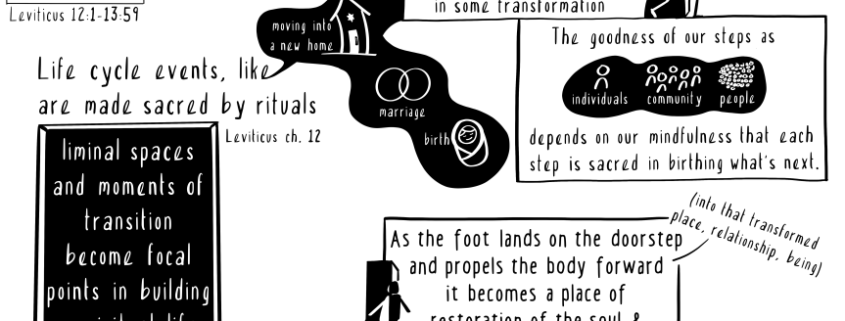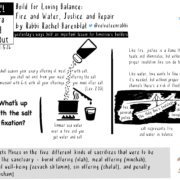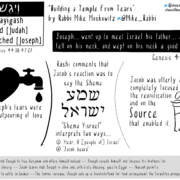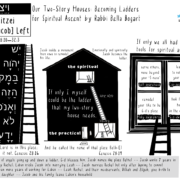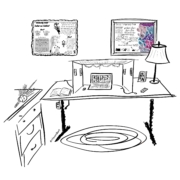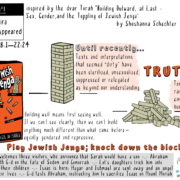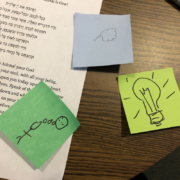Doorways
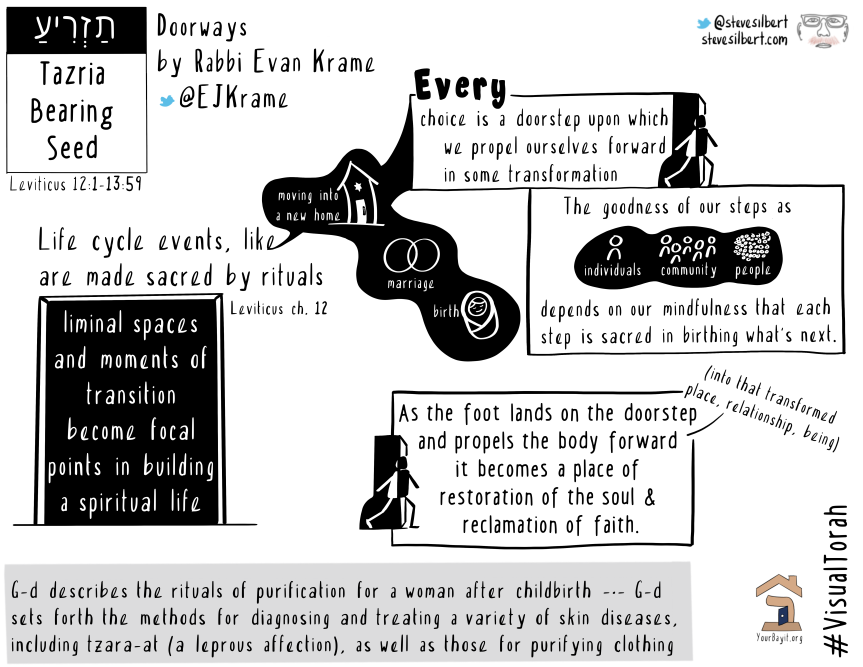
Part of a yearlong series on Torah’s wisdom about spiritual building and builders.
I enjoy counting each mezuzah I see on doorposts while walking through a neighborhood. Whether or not one is traditionally observant, it’s quintessentially Jewish to place these beacons of holiness at entrances to homes. I’m delighted when I see them.
Lately, I’ve come to understand mezuzot not only as fulfilling a mitzvah, but also as reminders that everything we build is a potential portal of rebirth and purification – and that we must build for those lofty purposes.
The call to build for rebirth and purification flows from this week’s Torah portion (Tazria) connecting birth, impurity and purity. In ancient Israel, mothers who birthed children had a period of purification before returning to community (Lev. 12:1-7). Spiritually speaking, birth blood was inherently “charged” and, thus, so too was the mother. Her spiritual “charge” had to be “discharged” – literally.
Just as the birth canal is a portal, so too is the Passover symbolism of lamb’s blood on the Hebrews’ doors. The bloodied doorways identified its inhabitants as those to be sheltered from the angel of death during the tenth plague (Ex. 12:7). In the morning, the birth of a free people came through bloodstained lintels and doorposts – marking the death of not only Egypt’s first-born children but also the lamb-image of an Egyptian “god.” The next day, Israel exited Mitzrayim (literally, “the straits” – the narrow place), birthed into a new life with and by God.
As lamb’s blood marked doorways then, so too do mezuzot mark doorways now. We exchange lintel lamb’s blood that marked our liberation for mezuzot parchment marking a different kind of liberation: “Love YHVH your God with all your heart, all your soul, all your might. Set these words that I command you this day on your heart. Teach them to your children…” (Deut. 6:5-7).
Whether blood or mezuzot, doorway markers serve the same spiritual function: to renew and liberate us each time we pay attention as we move through. With sacred intention, every door can be like a birth canal, arousing our next moment of liberation – and, as in this week’s paresha, arousing the “charge” of birth that we then must “discharge.”
The lessons for spiritual builders are profound, enduring and challenging. Potentially sacred spaces, such as the home, require careful design for both openness and narrowness. As the doorway marks the transition between interior and exterior, we can sense that emerging through narrow places evokes a dynamic sense of spirit. Doorways are the portals. Ritual objects, like the mezuzah, invite holiness in transitions. Ritual reminders here “charge” us up so that we can translate the inspiration within into “discharging” mitzvot out in the world.
Life cycle events and other rituals ask careful design for the journey from one spiritual state to another. A literal birth, the ritual design of a wedding chuppah, the chanukat bayit of placing mezuzot on the doors of a new home, or any other major life change – all are sacred Doorways. Moments of transition are portals, focal points for “charging” us up so that we can “discharge” a renewed sense of self in the next phase of life’s journey.
In this way, physical births marked by blood, physical doorways marked by mezuzot, and life events marked by ritual, all reflect this week’s Torah idea that all transitions have the potential to be a sacred “charge.” And if so, the whole world is an altar.
Midrash (Pesikta Zutarta, Lekach Tov, P. Bo, ch. 12.7) teaches that from the lintel blood of the Passover evening before liberation, “We learn that our ancestors in Egypt had four altars: the lintel, the two doorposts and the doorstep.” As the foot lands on the doorstep and propels the body forward, it becomes a place of transformation.
Every birth, every marriage, every death, every choice is likewise – a doorstep upon which we propel ourselves forward in some transformation. The goodness of our steps as individuals, a community and a people called to holiness, depends on our mindfulness that each step is sacred in birthing what’s next. They depend on seeing each step as “charged” with the power of creation, for us to “discharge” with purifying goodness in the world.
As we enter the month of Nissan and approach the Passover festival of freedom, we have the opportunity to re-dedicate ourselves and all that we build. As if being born, we can emerge anew. As if getting married, we move toward unification and harmony. As if making sacred our doorways, we get to step out into the altar of this world, reminded by parchments of love, determined to be free and spreading holiness in the world.


By Rabbi Evan J. Krame. Sketchnote by Steve Silbert.

